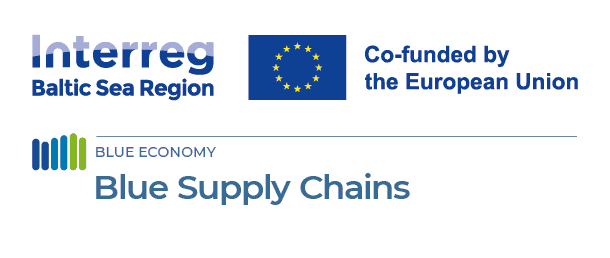
From Diesel to Electric: How Gdynia and Skagen Are Rewriting the Future of Ports
13 August 2025
Cleaner Cranes in Gdynia
Ports are rarely in the spotlight, but they are the invisible engines of our everyday lives. Yet these same places are also big contributors to pollution, thanks to heavy diesel-powered equipment and ships running their engines while docked. Two Baltic ports, Gdynia in Poland and Skagen in Denmark, have decided that business as usual isn’t good enough anymore. With support from the Blue Supply Chains project, they are proving that electrification is both possible and worthwhile.
At Gdynia Container Terminal, the focus was on one of the most energy-intensive machines in port operations: the Rubber‑Tyred Gantry crane, or RTG. Traditionally, these giants rely on diesel engines that consume vast amounts of fuel and generate heavy emissions. Instead of replacing its entire fleet — a cost few ports could bear — Gdynia chose to retrofit. One of its cranes was rebuilt to draw power from a 15 kV connection to the port’s grid. Engineers installed a heavy-duty cable reel so the crane could move freely while staying plugged in, added new transformers, and modernised control systems. The diesel generator was removed, leaving only a small backup for emergencies. Investments pay off by taking into account stability issues of the crane structure and pro-longed operating life time at the same time!
Also the impact is already visible. Each year, the electrified crane is expected to save over 30,000 liters of diesel and prevent around 80 tonnes of CO₂ emissions. As the report notes, “RTGs – if in use – are one of the largest sources of emissions in container terminals, making their electrification a key step toward decarbonisation.” For the terminal, this pilot is not just a technical trial — it’s a proof of concept showing that modernisation can be achieved without disrupting operations and pay off for the investors!
Shore Power at Skagen’s Busy Quay
Meanwhile, at the Port of Skagen, the challenge lay not in yard equipment but in ships moored at the quay. Fishing vessels and cargo ships traditionally keep their engines running to power onboard systems, resulting in constant noise and emissions. In 2025, Skagen introduced a new On-Shore Power Supply (OPS) system. With ten power outlets distributed along the quay — including near fish processing facilities — vessels can now plug into the local grid instead of burning marine fuel.
The benefits were immediate. The OPS allows ships to “turn off their auxiliary engines when berthed and use electricity from the port,” the report explains, cutting greenhouse gases and improving air quality in the surrounding community. The system was designed to be flexible, with mobile connections available for different vessel types. Looking ahead, Skagen aims to expand capacity to serve larger ships, including cruise vessels, which could require as much as 16 megawatts and significant reinforcement of the regional grid.
A Blueprint for Other Ports
Together, the Gdynia and Skagen pilots illustrate two complementary approaches to electrification. One focuses on retrofitting container cranes on land, the other on reducing ship emissions at berth. Both deliver cleaner air, quieter surroundings, and significant fuel savings. As the project documentation puts it, “electrification offers considerable benefits in terms of emissions reduction and economic savings, but requires significant investment, careful planning, and adaptation to local conditions.”
These lessons are now being shared through the Blue Supply Chains project, offering other ports practical roadmaps for their own transitions. For medium-sized ports across the Baltic, the message is clear: the green transition is no longer a distant ambition but a reality already unfolding on the ground.





